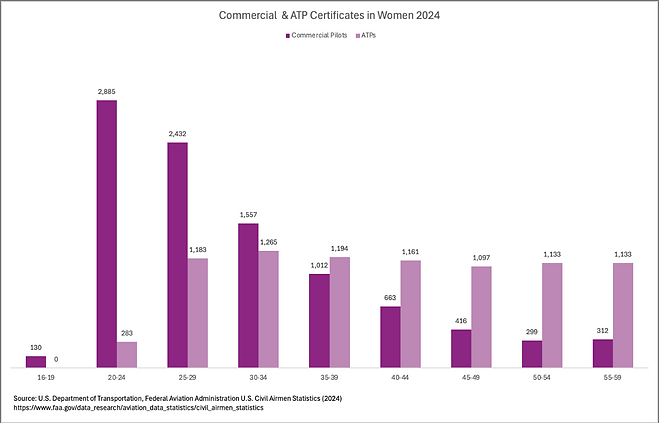

Our Research
“Currently there is insufficient data on the number of women in the aviation workforce. At a time when the industry is facing unprecedented shortages of qualified personnel, understanding these key gaps in the workforce can lead to strategies to not only expand the workforce but also enhance diversity."
Source: Lutte, Rebecca. (2019). Women in Aviation: A Workforce Report.
The systems of yesterday are giving us the results of today.
Hera’s work in research is to fill in the gaps in data, because we can’t manage what we don’t measure.


-
We see that there is a dramatic decrease in professional pilot certificates held by women at a time when most become caregivers.
-
Research shows that 86% of working mothers will leave a job for an opportunity that better supports their work, family, and other life considerations, and aviation is no different. Women in aviation experience an even larger workforce disparity given the lack of diverse and inclusive recruitment efforts and flexible work arrangements in the industry.

-
Focusing on talent diversity and inclusive recruiting, specifically for women, provides organizations access to an immense talent pool.
-
Access to an immense talent pool will lead to increased women applicants and hires and will ultimately improve employee retention.
-
Corporations that embrace gender diversity on their executive teams were more competitive and 21% more likely to experience above-average profitability.
-
Organizations also had a 27% likelihood of outperforming their peers on longer-term value creation.
